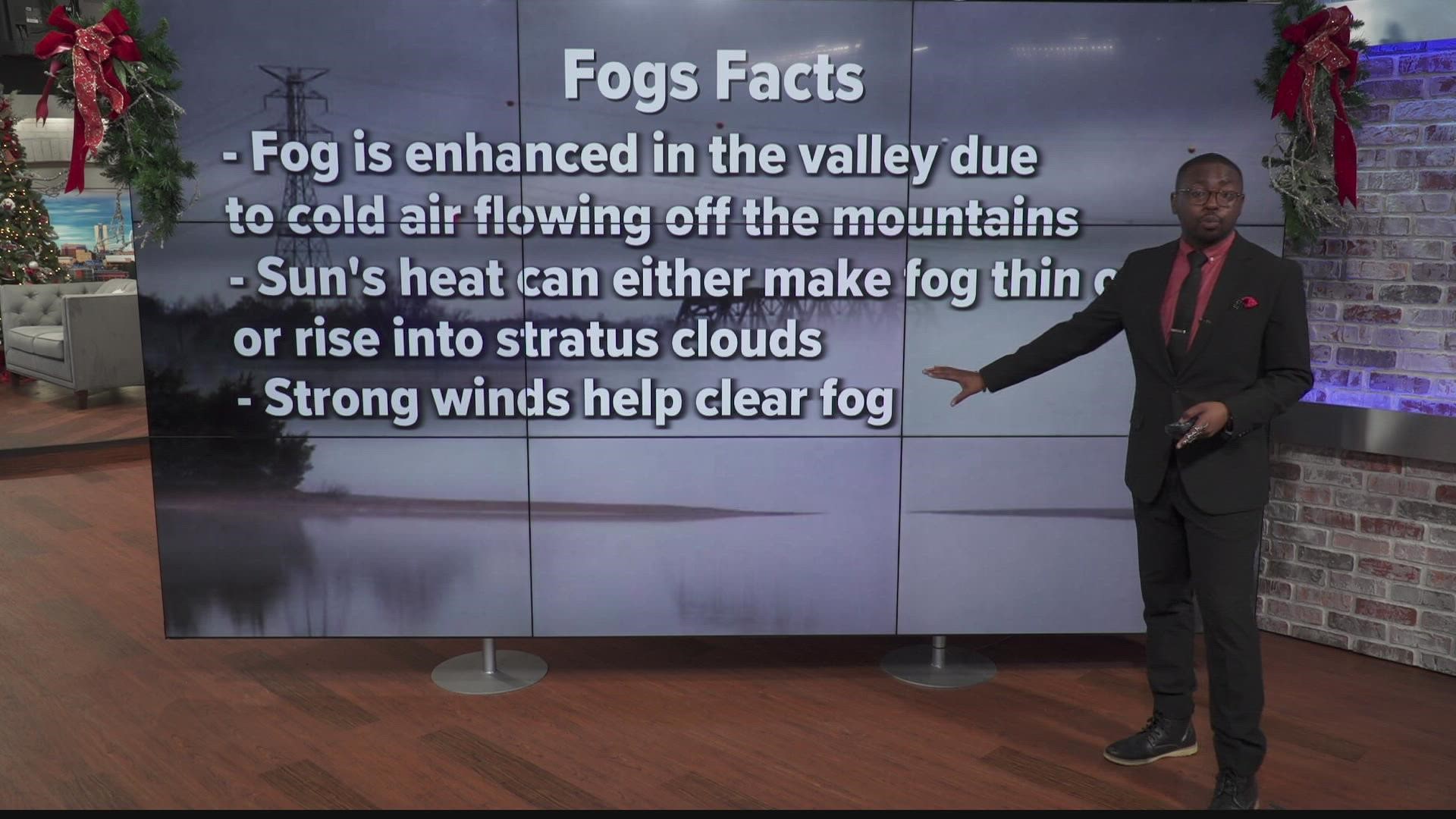KNOXVILLE, Tenn. — Recently in East Tennessee, there have been some very foggy conditions. Many people have complained about it, after a rainy week. East Tennessee can see up to two types of fog.
One of them is "radiation fog." This is a more simple type of fog, where you need some clear skies and also some calm winds. This fog happens because heat rises out of the ground and escapes. It's the same reason that East Tennessee loses temperature when it gets later at night.
Now combine that with "advection fog," which can happen when storm systems actually approach. It is an effect of warm air moving through the region.
It starts with cold lands like East Tennessee has right now, and then a low-pressure system bringing some warmer air along with it, usually via a warm front. When it arrives, it traps and cools down the air below it, bringing the temperature down to equal the dew point, making fog. Even during the winter, it can make a lot of ice fog when there are colder conditions.
Here are some more facts about that fog.
- The fog gets enhanced in the valley due to cold air flowing downslope from the rest of the mountains. That's why the valley usually gets some pretty dense fog.
- The sun's heat and can either make fog thin out if we have some very dry conditions; or if it's a bit wetter, we can even see them rise further up and turn into stratus clouds.
- Strong winds can also help dissipate fog because if there's well-mixed air, you don't have that division between warm air and cold air that makes fog possible.
- High amounts of pollutants can make fog form faster, thicker and longer lasting. So on days that a lot of people are out driving, we can see those foggy conditions worsen during the morning time.
- Fogs and clouds are nearly the same things. The only difference is how high up or low they are in the atmosphere.

